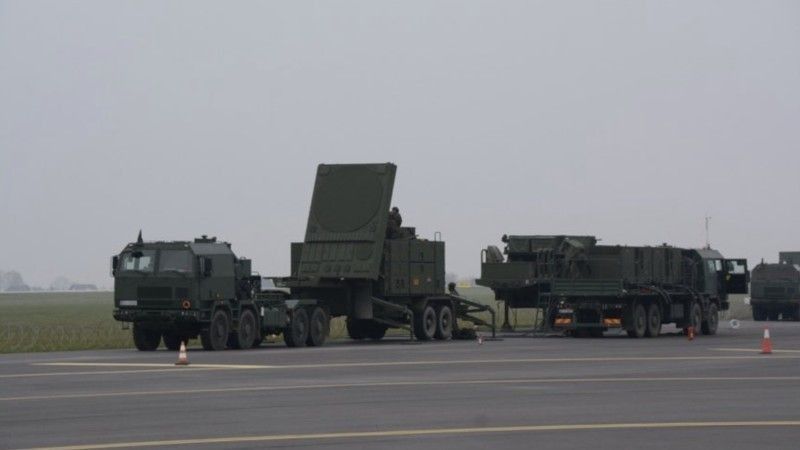Armed Forces
Polish Armed Forces Deploy Modern Layered Air Defence for the First Time

An important exercise is underway at Warsaw Radom Airport, which features next generation anti-aircraft systems of the Polish Armed Forces. This marks the first time that joint operations are being conducted by all three levels of the air defence network: medium, short and very short range.
According to the Minister of National Defence, Mariusz Błaszczak, an exercise is being conducted at Warsaw Radom Airport with the participation of Patriot, Mała Narew and Pilica units. This is a remarkable development in many respects.
Trwa szkolenie z wykorzystaniem systemów Patriot, Mała Narew i Pilica na lotnisku w Radomiu. Dzięki zakupom, które przeprowadziliśmy w ostatnich latach, po raz pierwszy szkolenie obrony przeciwlotniczej odbywa się bez udziału jakichkolwiek elementów systemów postsowieckich. pic.twitter.com/kBFiUYvhBt
— Mariusz Błaszczak (@mblaszczak) April 17, 2023
The exercise marks the first time that a three-layer air defence system has been created by anti-aircraft units of the Armed Forces. A Patriot detachment contributes medium-range coverage with additional ballistic missile defence capability. "Little" Narew (provisional name of the Narew system in an interim configuration) is equipped with short-range CAMM missiles that are capable of engaging airborne targets at a distance of 25 km. Close-range defence is provided by Pilica, a very short-range system equipped with Piorun and Grom missiles (with a range of 6.5 and 5.5 km respectively) as well as 23 mm cannons, which are mounted on automated carriages fitted with optoelectronic surveillance and targeting equipment.
Modern air defence is designed to operate in an integrated, layered network. Otherwise its effectiveness is compromised, particularly in the event of a massed attack. This gathering of next-generation hardware for a joint exercise is a symbolic but important step towards achieving a new level of defensive capability. It appears likely that in future exercises air defence crews will be subjected to more elaborate scenarios, making more use of the attributes of their new hardware. It is worth noting that the exercise features systems and crews from both the Air Force (Patriot, Pilica) and the Land Forces. This serves as an indirect confirmation that in the future Wisła, Narew and Pilica will all be expected to operate within an integrated air defence network, regardless of formal subordination.
Secondly, the exercise involves the operation of systems that are set to gain new capabilities this year. The Patriot (integrated with IBCS), purchased in 2018, is to achieve "basic operational capability" in 2023. Therefore, the Polish Armed Forces will gain a unit trained in basic Patriot and IBCS operation. As for "Little" Narew, Defence24.pl recently learned that plans are being put in place for the first live firing of a CAMM missile on Polish soil during the first half of the year at the Ustka training ground. For the first time in history Polish air defence units will obtain practical experience with a modern, Air Defence missile system capable of engaging multiple targets simultaneously, provided and integrated by the Polish industry.
Thirdly, all of the systems mentioned above are in continuous development. In Phase 1 of the Wisła programme the system will receive Polish command cabins and communication systems. Expanded target detection capabilities (e.g. a 360 degree radar and Polish-developed ,early warning sensors) as well as the acquisition of the desired number of firing units, is planned for Phase 2. Under a long-term development roadmap Narew is to receive a new radar, longer-range CAMM family missiles, as well as full IBCS integration. Finally, Pilica will be developed into a new configuration, designated Pilica+, with modifications to the command and control system, the addition of Bystra radar and CAMM missile launchers, along with plans for the future integration of counter-UAS solutions.
The road to building a layered air defence system in the Polish Armed Forces is a long and arduous one. The exercise in Radom is but one of many steps along the way to the desired level of capabilities.
